Clonmel, the largest town in County Tipperary, Ireland, has a rich and fascinating history that spans centuries. Located in the south of the county, Clonmel sits on the banks of the River Suir, which has played a significant role in shaping the town’s development. The Comeragh Mountains to the south and Slievenamon to the east provide a stunning backdrop to this picturesque town.
Contents
Geography and location
Clonmel’s strategic location on the River Suir has been a crucial factor in its growth and prosperity throughout history. The river served as an important transportation route, enabling the town to establish itself as a hub for trade and commerce. The fertile lands surrounding the town have also been essential to its agricultural heritage.
The town’s proximity to the Comeragh Mountains and Slievenamon has not only provided a scenic setting but has also influenced its development. These natural barriers have served as a defensive advantage during times of conflict and have shaped the town’s layout and expansion over time.
Etymology of “Clonmel”
The name “Clonmel” is derived from the Irish Gaelic “Cluain Meala,” which translates to “honey meadow.” This name is believed to refer to the fertile lands surrounding the town, which were known for their abundance of wildflowers and the production of honey.
The use of “Cluain” in the town’s name is significant, as it is a common prefix in Irish place names, meaning “meadow” or “pasture.” This naming convention reflects the agricultural importance of the area and its role in the town’s early development.
The “honey” component of the name is thought to be a reference to the sweet nectar produced by the wildflowers that once thrived in the area. This connection to the natural world is a testament to the town’s long-standing relationship with its surrounding environment.
Early History
The early history of Clonmel is a fascinating tale of prehistoric settlements, Viking influence, and Norman conquest. These early periods laid the foundation for the town’s development and shaped its unique character.
Prehistoric settlements
Evidence of prehistoric settlements in the Clonmel area dates back to the Neolithic period, approximately 4000 BCE. Archaeological findings, such as stone tools and pottery fragments, suggest that early inhabitants were attracted to the area due to its fertile lands and strategic location along the River Suir.
During the Bronze Age (2500-500 BCE), the region surrounding Clonmel saw an increase in human activity. The discovery of bronze artifacts and burial sites indicates that the area was an important center for trade and cultural exchange.
The Iron Age (500 BCE-400 CE) brought further development to the area, with the construction of hill forts and the emergence of Celtic culture. These early settlements set the stage for the town’s growth and development in the centuries to come.
Viking influence
The Vikings, renowned for their seafaring and trading abilities, made their way up the River Suir and established a presence in the Clonmel area during the 9th and 10th centuries CE. While their influence was not as significant as in other parts of Ireland, such as Dublin and Waterford, the Vikings did leave their mark on the town.
The Viking presence in Clonmel was primarily focused on trade and commerce. They likely used the town as a base for their trading activities, exchanging goods with the local population and other Viking settlements along the Irish coast.
Some local place names, such as “Cantwell Street,” are thought to have Norse origins, indicating the lingering influence of the Vikings on the town’s toponymy.
Norman conquest and the Butler family
The Norman conquest of Ireland in the late 12th century had a profound impact on Clonmel and its surrounding areas. The town fell under the control of the powerful Butler family, who would shape its development for centuries to come.
The Butlers, originally from Normandy, were granted vast tracts of land in Ireland by King Henry II of England. They quickly established themselves as one of the most influential families in the country, with Clonmel becoming an important center of their power.
Under the Butlers’ rule, Clonmel began to take shape as a fortified town. The construction of town walls and a castle in the 13th century marked the beginning of a new era in the town’s history, one characterized by growth, trade, and political intrigue.
The Butlers’ influence on Clonmel extended beyond military and political control. They were also patrons of the arts, and their support for the Church led to the construction of several significant religious buildings, such as the Franciscan Friary, which would become an important center of learning in the region.
Medieval Period
The medieval period was a time of significant growth and development for Clonmel. During this era, the town transformed from a small settlement into a thriving center of trade, religion, and military power.
Development of the town
Under the rule of the Butler family, Clonmel experienced rapid growth and development during the medieval period. The town’s strategic location along the River Suir made it an important hub for trade and commerce, attracting merchants and craftsmen from across Ireland and beyond.
The Butlers encouraged the growth of industries such as wool production, tanning, and brewing, which contributed to the town’s economic prosperity. They also granted charters and privileges to the town, fostering the development of local government and civic institutions.
As the town grew, so did its population. The construction of new houses, shops, and public buildings transformed the urban landscape, while the establishment of markets and fairs drew people from the surrounding countryside to trade their goods and services.
Construction of town walls and fortifications
One of the most significant developments in medieval Clonmel was the construction of the town walls and fortifications. The Butlers recognized the strategic importance of the town and invested heavily in its defense.
The first town walls were built in the 13th century, enclosing an area of approximately 20 acres. The walls were constructed of stone and were up to 20 feet high in places, with several towers and gates providing additional defense.
The town’s fortifications were put to the test during the Norman invasion of Ireland in the late 12th century. Clonmel’s walls and castle proved to be a formidable obstacle for the invaders, and the town emerged relatively unscathed from the conflict.
Over the centuries, the town walls were expanded and strengthened, with additional towers and gates added to improve their defensive capabilities. The walls would play a crucial role in the town’s defense during the Cromwellian conquest of Ireland in the mid-17th century.
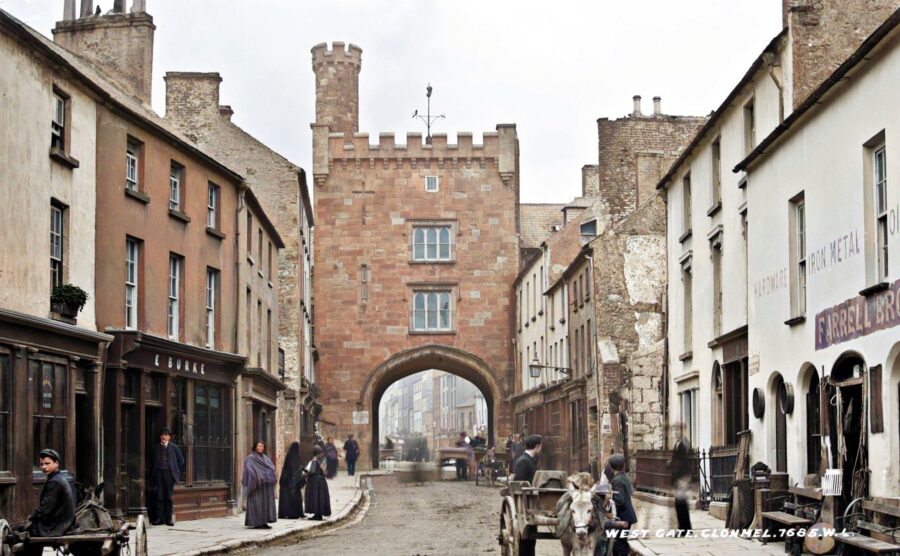
Old St. Mary’s Church
One of the most significant religious buildings in medieval Clonmel was Old St. Mary’s Church. Built in the 13th century, the church was a fine example of Gothic architecture and served as the main place of worship for the town’s inhabitants.
The church was built on the site of an earlier religious building and was likely constructed under the patronage of the Butler family. It featured a long nave, a chancel, and several side chapels, as well as a tower that dominated the town’s skyline.
Throughout the medieval period, Old St. Mary’s Church played a central role in the religious and social life of Clonmel. It was the site of important ceremonies, such as baptisms, weddings, and funerals, and was also a place of learning and scholarship.
The Main Guard
Another significant building in medieval Clonmel was the Main Guard, which served as the headquarters of the town’s military garrison. Built in the 15th century, the Main Guard was a strong, fortified structure that housed soldiers and their equipment.
The Main Guard was strategically located near the town’s main gate, allowing the garrison to quickly respond to any threats or disturbances. It also served as a symbol of the Butlers’ power and authority over the town.
In addition to its military function, the Main Guard also served as a center of local government. It housed the town’s courts and council chambers, where important decisions affecting the town were made.
The medieval period was a time of great change and development for Clonmel. The town’s growth, fortifications, religious buildings, and civic institutions all contributed to its emergence as a significant center of power and influence in the region.
Tudor and Stuart Eras
The Tudor and Stuart eras brought significant changes to Clonmel, as religious upheaval, political strife, and military conflict shaped the town’s development during this period.
Dissolution of the monasteries
The dissolution of the monasteries, which began in England under King Henry VIII in the 1530s, had a profound impact on Clonmel. The town was home to several religious houses, including the Franciscan Friary and the Dominican Priory, which were closed and their lands confiscated by the Crown.
The closure of the monasteries had both religious and economic consequences for the town. Many of the monks and nuns were forced to leave, while the lands and buildings they had once occupied were sold off to private individuals or appropriated by the state.
The dissolution also led to the destruction of many valuable books, manuscripts, and works of art that had been housed in the monasteries. This loss of cultural heritage was deeply felt by the town’s inhabitants and marked a significant break with Clonmel’s medieval past.
The Nine Years’ War
The Nine Years’ War (1594-1603) was a major conflict between the English government and the Irish chieftains, led by Hugh O’Neill, Earl of Tyrone. Clonmel played a significant role in the war, serving as a strategic base for English forces.
In 1599, the Earl of Essex, Lord Lieutenant of Ireland, arrived in Clonmel with a large army to suppress the Irish rebellion. The town’s walls and fortifications were strengthened in anticipation of an attack, and the garrison was reinforced with additional troops.
Despite these preparations, Clonmel was not directly involved in any major battles during the Nine Years’ War. However, the town did serve as a supply base and staging point for English forces, and its inhabitants were affected by the economic and social disruption caused by the conflict.
Siege of Clonmel by Oliver Cromwell (1650)
The most significant military event in Clonmel’s history during the Tudor and Stuart eras was the siege of the town by Oliver Cromwell in 1650. Cromwell, who had recently conquered Ireland on behalf of the English Parliament, arrived at Clonmel with a large army determined to take the town.
Clonmel was heavily fortified and defended by a garrison of Irish Confederate soldiers under the command of Hugh Dubh O’Neill. The town’s walls and castle proved to be a formidable obstacle for Cromwell’s forces, and the siege lasted for several weeks.
Despite the best efforts of the defenders, Cromwell’s army eventually breached the walls and entered the town. The fighting was fierce and bloody, with heavy casualties on both sides. In the end, however, the superior numbers and firepower of the English forces proved decisive, and Clonmel fell to Cromwell.
The siege of Clonmel was a turning point in the Cromwellian conquest of Ireland. The town’s capture opened the way for further advances by English forces and helped to consolidate their control over the country.
The Tudor and Stuart eras were a time of great upheaval and change for Clonmel. The dissolution of the monasteries, the Nine Years’ War, and the siege by Oliver Cromwell all left their mark on the town, shaping its development and altering its character in significant ways. Despite these challenges, however, Clonmel emerged from this period as a strong and resilient community, ready to face the challenges of the modern era.
18th Century
The 18th century was a period of significant economic and social change for Clonmel, as the town adapted to new industries, transportation methods, and the challenges posed by the Great Famine.
The rise of the milling industry
One of the most significant developments in Clonmel during the 18th century was the rise of the milling industry. The town’s location on the River Suir, coupled with its fertile hinterland, made it an ideal place for the establishment of flour and grain mills.
The first recorded mill in Clonmel dates back to the early 1700s, and by the end of the century, there were several large-scale milling operations in the town. These mills used water power from the River Suir to grind wheat and other grains into flour, which was then exported to markets across Ireland and beyond.
The milling industry brought significant economic benefits to Clonmel, providing employment for many of the town’s inhabitants and stimulating the growth of related industries, such as baking and brewing. The mills also contributed to the town’s physical development, with the construction of new buildings, roads, and bridges to support the industry.
Charles Bianconi and the Bianconi Coaches
Another significant figure in Clonmel’s 18th-century history was Charles Bianconi, an Italian-born entrepreneur who established a groundbreaking transportation system in Ireland. Bianconi settled in Clonmel in the early 1800s and quickly recognized the need for reliable and affordable transportation between the town and other parts of the country.
In 1815, Bianconi established the first of his famous “Bianconi Coaches,” a network of horse-drawn carriages that connected Clonmel with other towns and cities across Ireland. The coaches were known for their speed, comfort, and reliability, and they quickly became a popular means of transportation for both passengers and goods.
Bianconi’s coaching system had a profound impact on Clonmel and the surrounding region. It made travel easier and more accessible, opening up new markets for the town’s industries and facilitating the exchange of ideas and information. The coaches also played a vital role in the social and cultural life of the town, with many notable figures, including Daniel O’Connell and William Makepeace Thackeray, using them to visit Clonmel.
The Great Famine (1845-1849)
The Great Famine, which ravaged Ireland between 1845 and 1849, had a devastating impact on Clonmel and its inhabitants. The famine was caused by a combination of factors, including the failure of the potato crop, which was a staple food for much of the population, and the inadequate response of the British government to the crisis.
Clonmel, like many other towns in Ireland, experienced significant hardship during the famine years. Many of the town’s poor and working-class inhabitants were left without food or shelter, and disease and starvation were widespread. The milling industry, which had been a major employer in the town, was also affected by the famine, with many mills closing down or reducing their operations.
Despite the challenges posed by the famine, Clonmel’s inhabitants showed remarkable resilience and community spirit. Local relief committees were established to provide food and assistance to those in need, and many of the town’s wealthier residents contributed to these efforts. The town’s religious leaders, including the Catholic clergy and the Quakers, also played a significant role in providing aid and support to the community.
The 18th century was a time of both opportunity and challenge for Clonmel. The rise of the milling industry and the establishment of the Bianconi coaching system brought economic growth and prosperity to the town, while the Great Famine tested the resilience and spirit of its inhabitants. Through it all, Clonmel emerged as a stronger and more vibrant community, ready to face the challenges of the modern era.
19th Century
The 19th century was a period of significant change and upheaval for Clonmel, marked by industrial growth and decline, political unrest, and the emergence of notable literary figures.
Industrial growth and decline
The early 19th century saw continued growth in Clonmel’s milling industry, with the establishment of several new mills along the River Suir. The town’s prosperity was further boosted by the arrival of the railway in 1852, which connected Clonmel to Dublin and other major cities, facilitating the transport of goods and people.
However, the latter half of the century brought challenges to Clonmel’s industrial base. The repeal of the Corn Laws in 1846, which had protected Irish grain producers from foreign competition, led to a decline in the milling industry. Many of the town’s mills closed down or were converted to other uses, leading to job losses and economic hardship.
Despite these challenges, Clonmel’s economy remained relatively diverse, with other industries, such as tanning, brewing, and butter-making, providing employment for the town’s inhabitants.
The Young Irelanders Rebellion (1848)
In 1848, Clonmel was caught up in the Young Irelanders Rebellion, a failed uprising against British rule in Ireland. The rebellion was led by a group of young, educated nationalists who sought to establish an independent Irish republic.
Clonmel played a significant role in the rebellion, with several of the town’s inhabitants, including the poet and journalist John O’Leary, joining the Young Irelanders. The town was also the site of a major rally in support of the rebellion, attended by thousands of people from across the region.
Despite initial successes, the Young Irelanders Rebellion was ultimately defeated by British forces. Many of the rebels, including O’Leary, were arrested and imprisoned, while others fled into exile.
The Fenian Rising (1867)
In 1867, Clonmel was once again at the center of political unrest, with the outbreak of the Fenian Rising. The Fenians were a secret society of Irish nationalists who sought to overthrow British rule and establish an independent Irish republic.
Clonmel was a key target for the Fenians, who hoped to seize control of the town’s military barracks and use it as a base for further operations. However, the rising was poorly organized and quickly suppressed by British forces.
Several Clonmel residents were involved in the Fenian Rising, including James Stephens, one of the founders of the Fenian movement. Stephens was arrested in Clonmel in 1866 but managed to escape from prison and flee to America.
Notable figures
The 19th century also saw the emergence of several notable literary figures associated with Clonmel. One of the most famous was Laurence Sterne, the author of “Tristram Shandy” and “A Sentimental Journey.” Sterne was born in Clonmel in 1713 and spent much of his childhood in the town.
Another significant literary figure associated with Clonmel was Anthony Trollope, the prolific Victorian novelist. Trollope worked as a postal inspector in Ireland in the 1840s and spent time in Clonmel, where he gained inspiration for some of his Irish-themed novels, such as “The Kellys and the O’Kellys.”
Other notable figures associated with Clonmel in the 19th century include the poet and nationalist Charles J. Kickham, who was born in the nearby village of Mullinahone, and the artist Amelia Curran, who painted several portraits of local notables.
The 19th century was a time of significant change and upheaval for Clonmel, marked by industrial growth and decline, political unrest, and the emergence of notable literary figures. Despite the challenges faced by the town and its inhabitants, Clonmel remained a vital center of culture, commerce, and community life in Ireland.
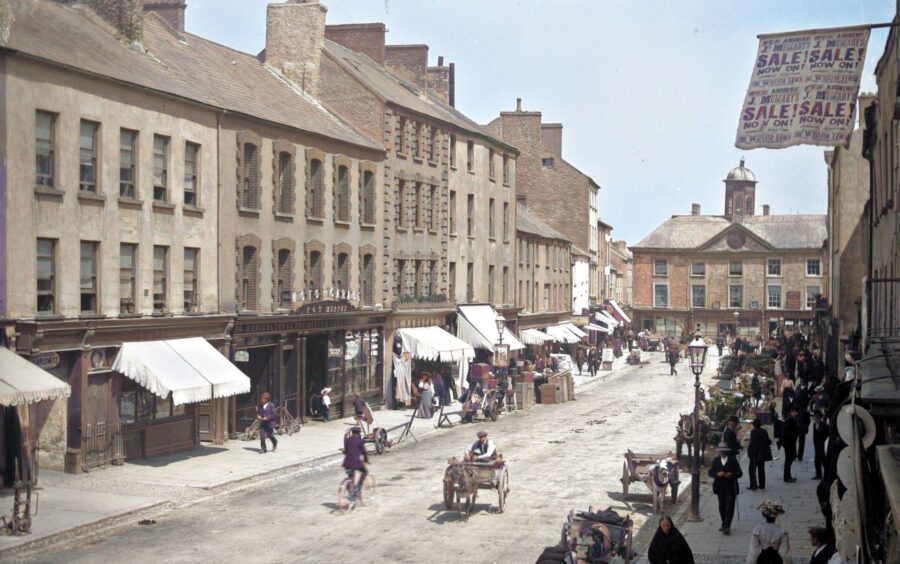
20th Century
The 20th century brought significant political, economic, and cultural changes to Clonmel, as the town navigated the challenges of war, independence, and modernization.
Irish War of Independence (1919-1921)
Clonmel played a significant role in the Irish War of Independence, which began in 1919 and ended with the Anglo-Irish Treaty of 1921. The town was a center of republican activity, with many of its inhabitants joining the Irish Republican Army (IRA) and participating in guerrilla warfare against British forces.
One of the most significant events of the war in Clonmel was the attack on the town’s police barracks in May 1920. A group of IRA volunteers, led by Seán Treacy and Dan Breen, stormed the barracks and seized a cache of weapons, dealing a significant blow to British authority in the area.
Clonmel was also the site of several other notable incidents during the war, including the ambush of a British military convoy in September 1920 and the execution of two IRA volunteers by British forces in January 1921.
Irish Civil War (1922-1923)
The Anglo-Irish Treaty, which ended the War of Independence, also led to the outbreak of the Irish Civil War in 1922. Clonmel was once again at the center of the conflict, with rival factions of the IRA battling for control of the town.
In April 1922, anti-treaty forces occupied the town’s military barracks and declared Clonmel to be part of the “Irish Republic.” However, they were soon driven out by pro-treaty forces, who took control of the town and established a new local government.
The Civil War had a devastating impact on Clonmel, with many buildings and businesses destroyed or damaged in the fighting. The town’s economy also suffered, as trade and commerce were disrupted by the conflict.
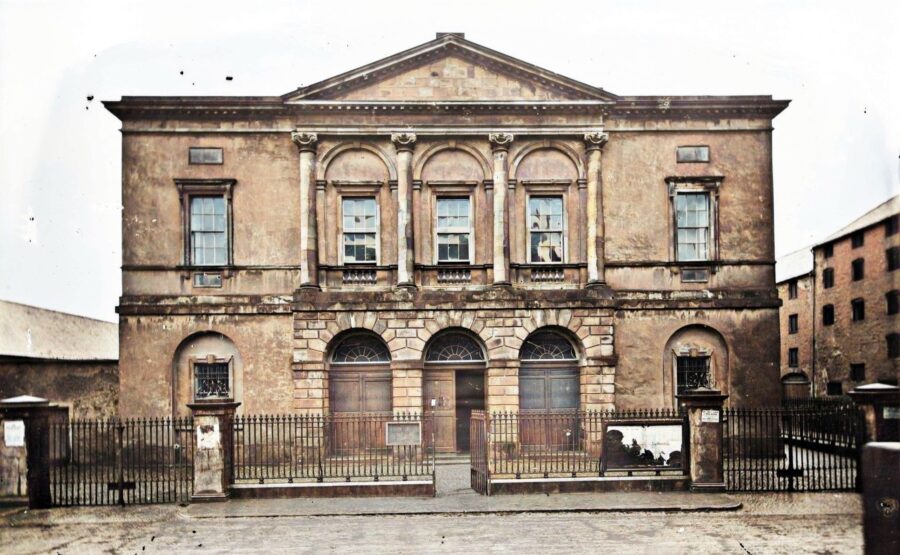
Economic development and modernization
Despite the challenges of war and political upheaval, Clonmel experienced significant economic and social development in the 20th century. The town’s traditional industries, such as milling and tanning, declined in importance, but new industries, such as pharmaceuticals and engineering, emerged to take their place.
The establishment of the Clonmel Industrial Development Association in the 1930s helped to attract new businesses to the town, including the American company Merck Sharp & Dohme, which opened a pharmaceutical plant in Clonmel in 1976.
The town also benefited from improved infrastructure and public services, including the construction of new roads, schools, and hospitals. The arrival of electricity and running water in the early 20th century also helped to improve the quality of life for Clonmel’s inhabitants.
Cultural heritage and notable figures
Clonmel’s rich cultural heritage continued to flourish in the 20th century, with the town producing several notable figures in the arts and music. One of the most famous was the tenor Frank Patterson, who was born in Clonmel in 1938 and went on to achieve international acclaim as a singer of Irish and classical music.
Another significant figure was the composer and musicologist Mícheál Ó Súilleabháin, who was born in Clonmel in 1950 and helped to popularize traditional Irish music through his innovative compositions and performances.
Clonmel also became known for its vibrant theatre scene, with the Clonmel Theatre Guild and the White Memorial Theatre staging regular productions of plays and musicals.
The town’s cultural heritage was further celebrated with the establishment of the Tipperary County Museum in Clonmel in 1974, which showcases the history and culture of the region through a range of exhibitions and artifacts.
The 20th century was a time of significant change and development for Clonmel, marked by political upheaval, economic modernization, and cultural achievement. Despite the challenges faced by the town and its inhabitants, Clonmel emerged as a thriving and dynamic community, proud of its rich heritage and confident in its future.
Contemporary Clonmel
In the 21st century, Clonmel has embraced its role as a hub for tourism, culture, and recreation, while also grappling with the economic and social challenges facing many modern Irish towns.
Tourism and attractions
Clonmel has become an increasingly popular destination for tourists in recent years, attracted by the town’s rich history, scenic beauty, and vibrant cultural scene. The town’s main attractions include the Tipperary County Museum, which showcases the history and heritage of the region, and the Main Guard, a 17th-century courthouse that now serves as a venue for exhibitions and events.
Other notable attractions include the West Gate, a 19th-century reconstruction of a medieval gateway, and the Suir Island Fairy Trail, a magical woodland walk along the banks of the River Suir.
Clonmel is also a popular base for exploring the surrounding region, with nearby attractions such as the Cahir Castle, the Swiss Cottage, and the Mitchelstown Caves drawing visitors from around the world.
Festivals and events (e.g., Finding a Voice)
Clonmel is renowned for its lively festival scene, with a range of events throughout the year celebrating the town’s cultural heritage and artistic traditions. One of the most notable is the Finding a Voice festival, which showcases the work of women composers and musicians from around the world.
Other popular festivals include the Clonmel Junction Arts Festival, a multi-disciplinary arts event featuring music, theatre, dance, and visual arts, and the Clonmel Applefest, a celebration of the town’s horticultural heritage.
Clonmel is also home to several sporting events, including the famous Clonmel Horse Show, which attracts equestrian enthusiasts from across Ireland and beyond.
Suir Blueway and recreational activities
In recent years, Clonmel has invested in the development of the Suir Blueway, a network of walking and cycling trails along the banks of the River Suir. The Blueway offers a range of recreational activities, from gentle strolls to more challenging hikes and bike rides, all set against the backdrop of the stunning Tipperary countryside.
Other popular recreational activities in Clonmel include fishing, with the River Suir known for its excellent salmon and trout stocks, and golfing, with several courses in the area offering a range of challenges for players of all levels.
The town is also home to several sports clubs and facilities, including the Clonmel Commercials GAA Club, the Clonmel Rugby Club, and the Clonmel Rowing Club.
Economic and social challenges
Despite its many strengths and assets, Clonmel also faces several economic and social challenges in the 21st century. Like many other Irish towns, Clonmel has been affected by the decline of traditional industries, such as manufacturing and agriculture, leading to job losses and economic uncertainty.
The town has also grappled with issues such as housing affordability, social inequality, and the need to provide adequate services and infrastructure for a growing population.
In response to these challenges, Clonmel has sought to diversify its economy and attract new industries and businesses to the area. The town has also invested in education and training programs to help workers adapt to new economic realities and develop new skills.
At the same time, Clonmel has worked to build strong communities and support networks, with a range of social and voluntary organizations providing assistance and support to those in need.
As Clonmel looks to the future, it will need to continue to balance the demands of economic growth and development with the need to preserve its unique cultural heritage and maintain a high quality of life for all its inhabitants. By building on its strengths and facing its challenges head-on, Clonmel has the potential to thrive and prosper in the years ahead.
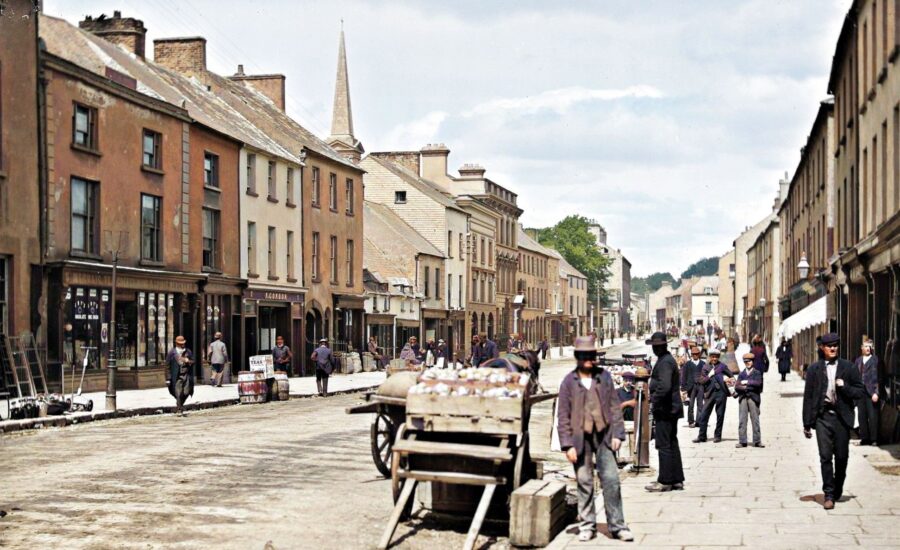


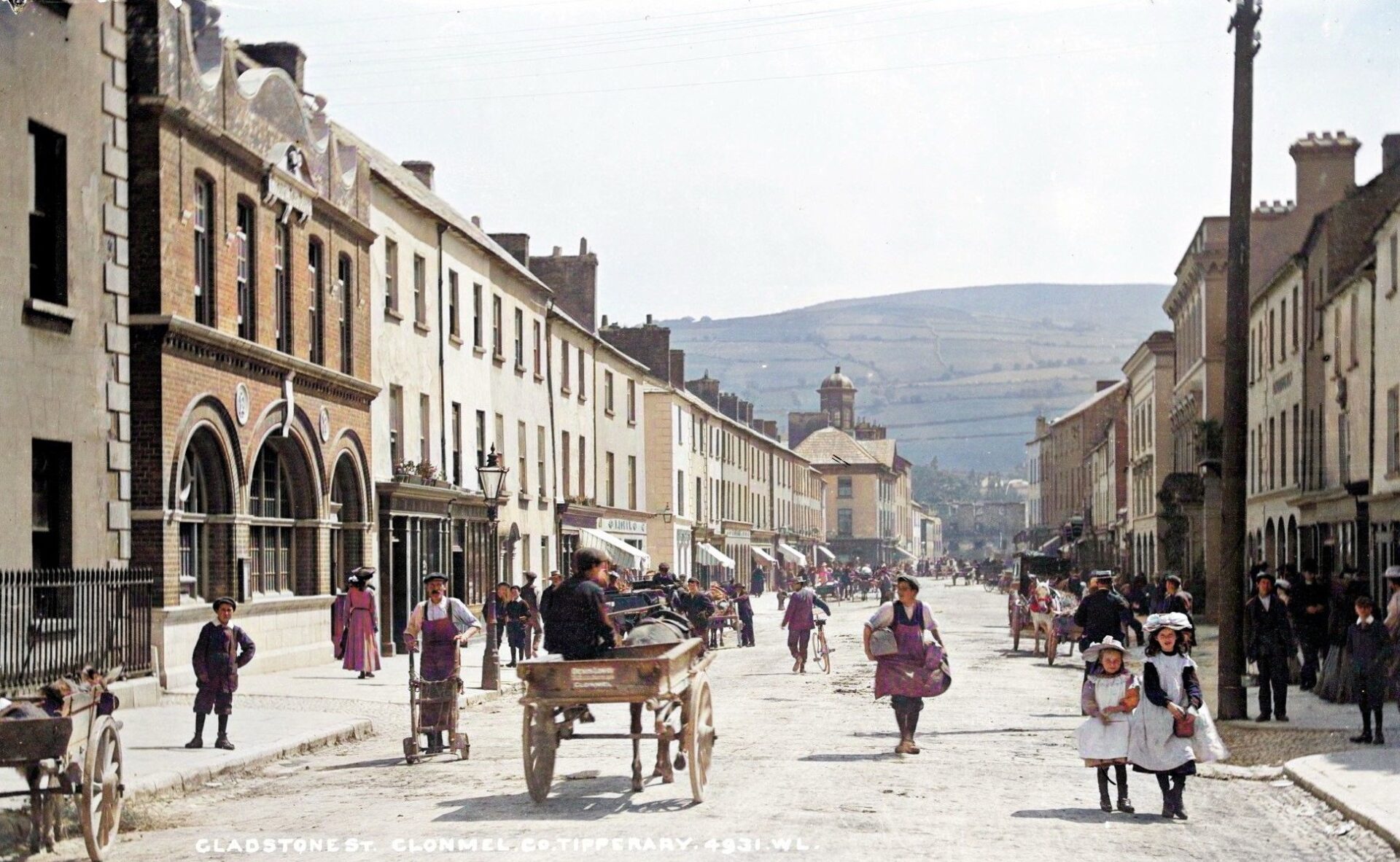
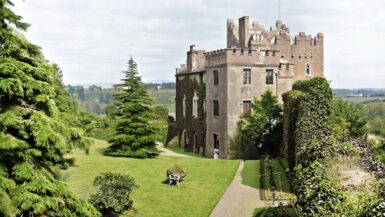
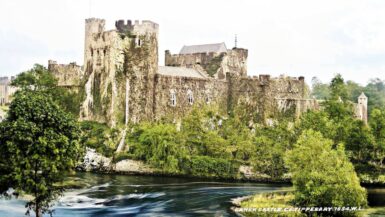
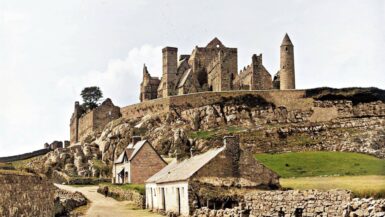
Leave a reply